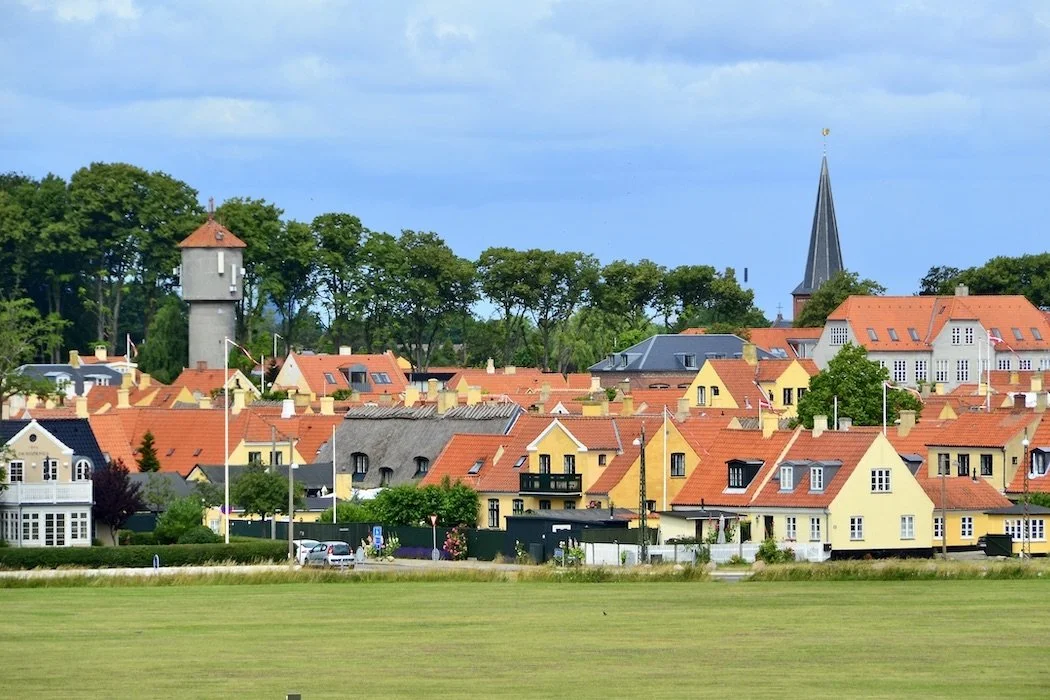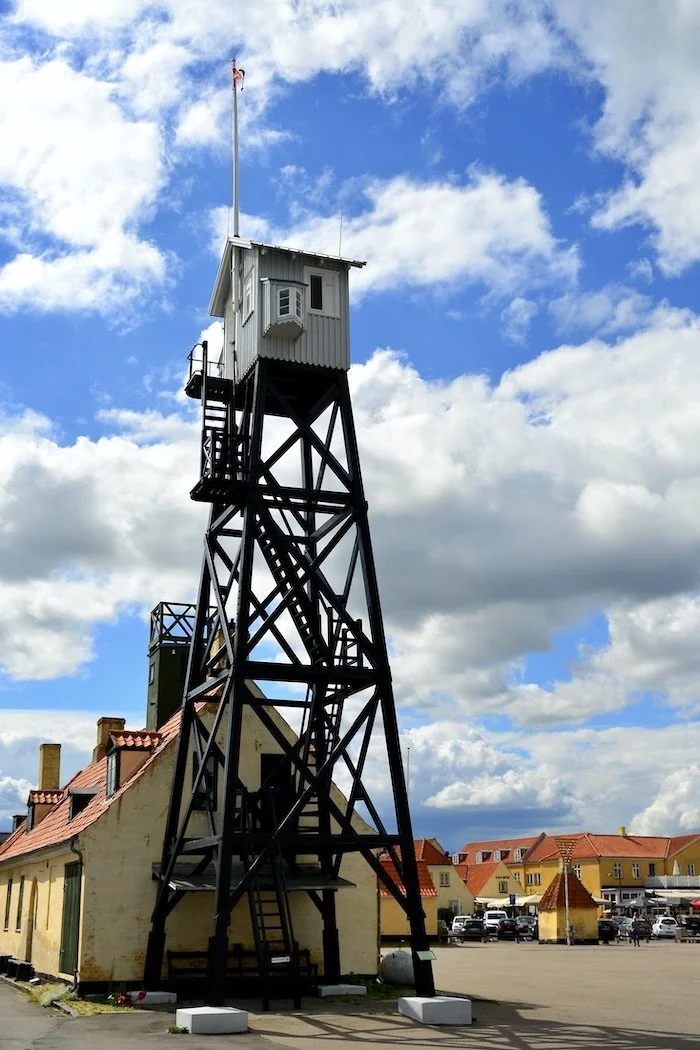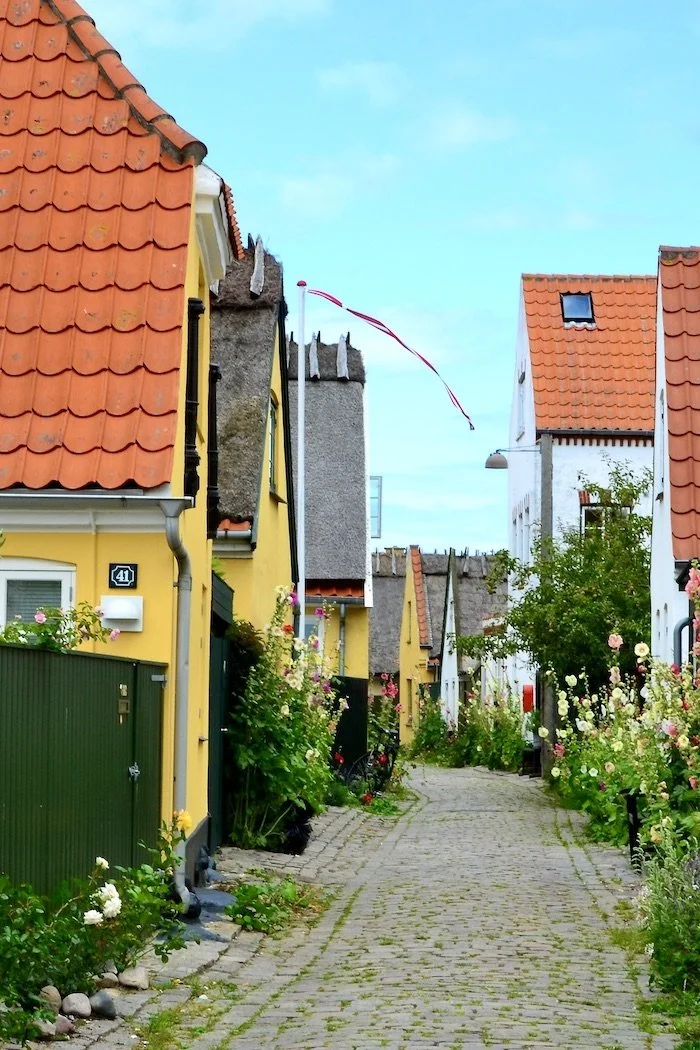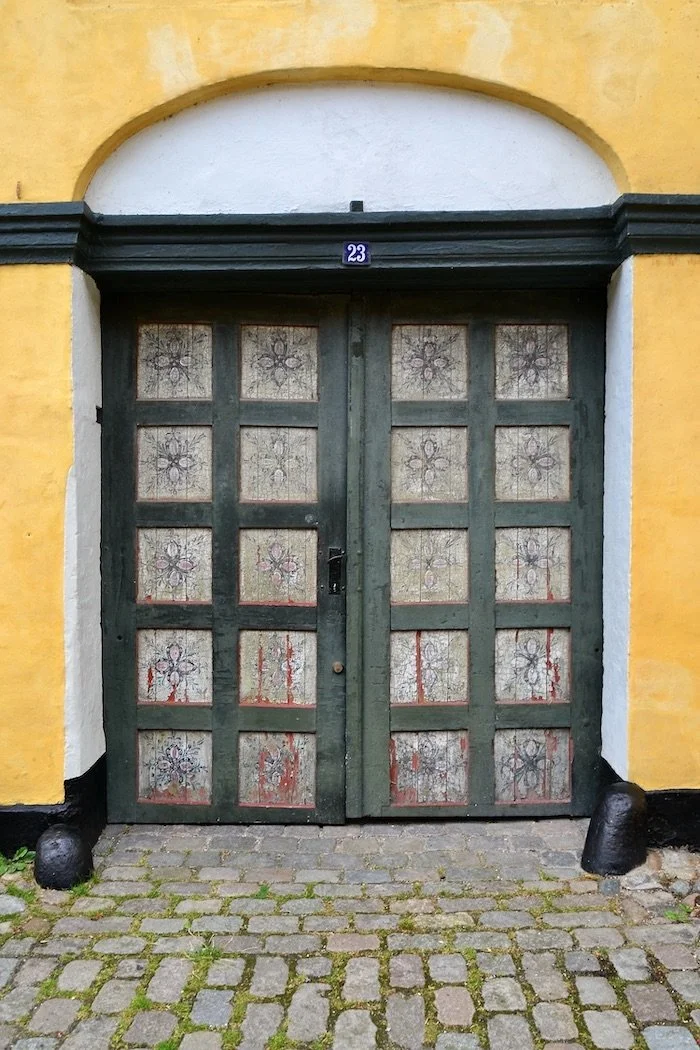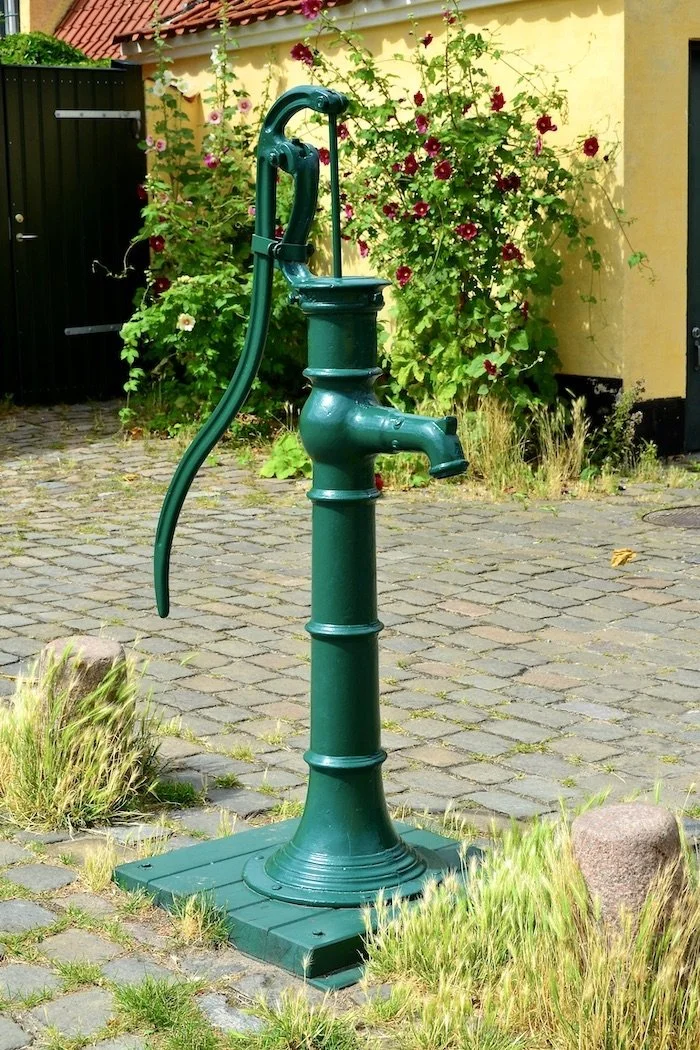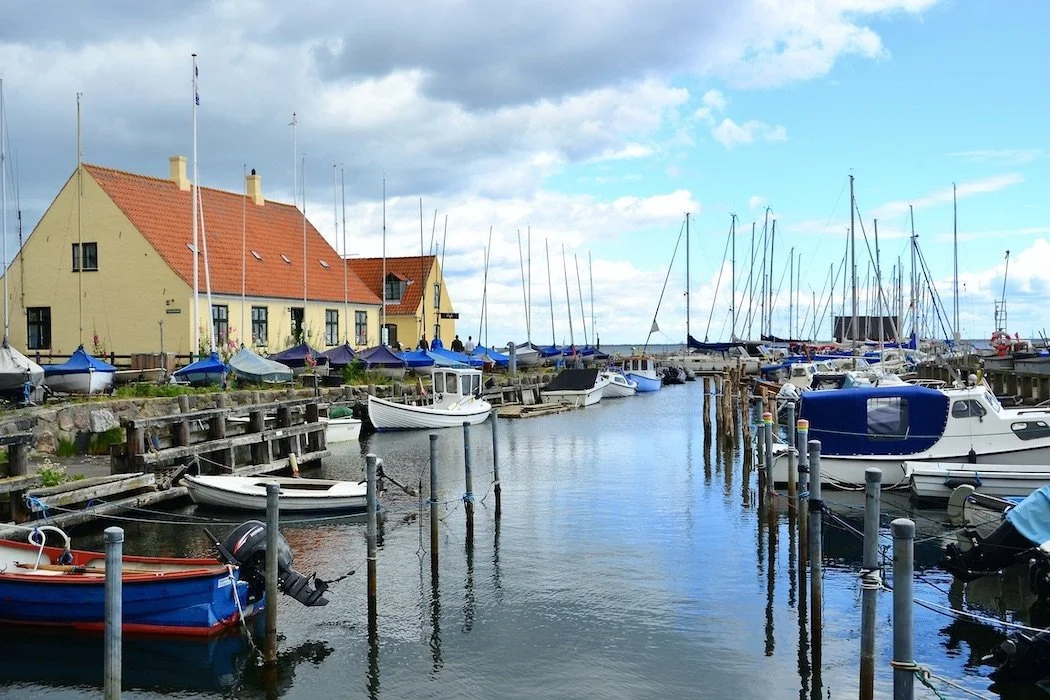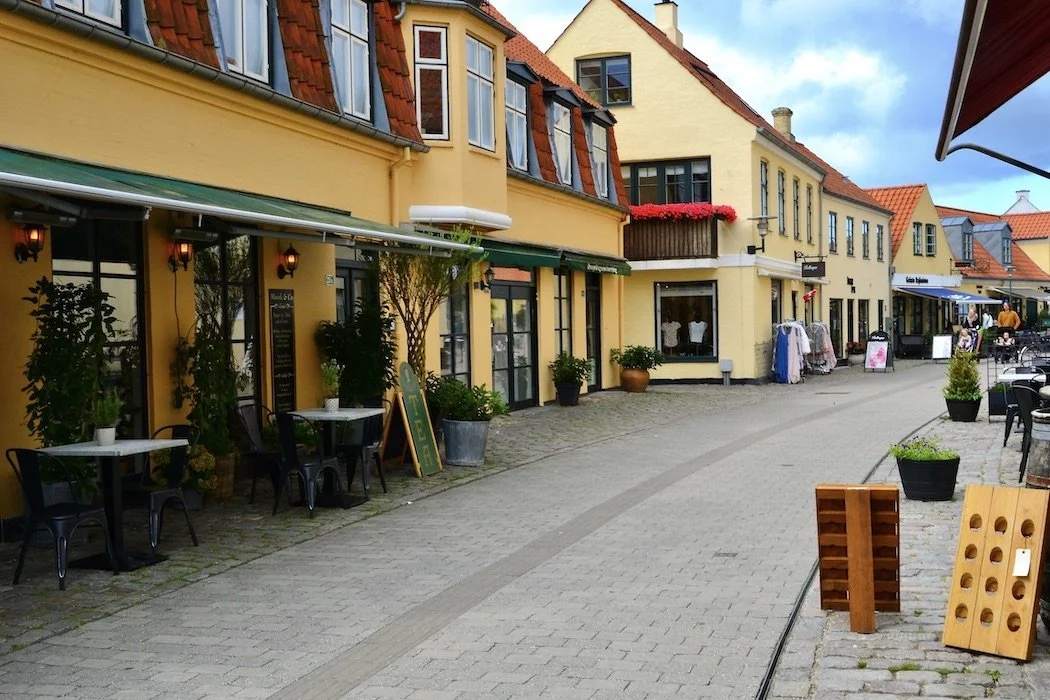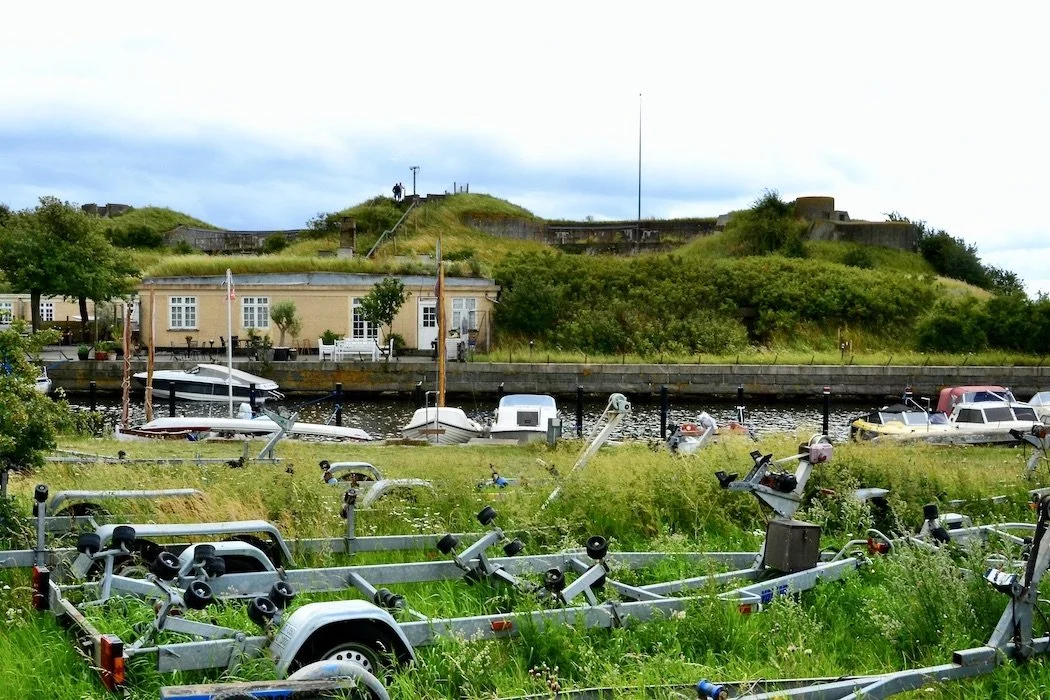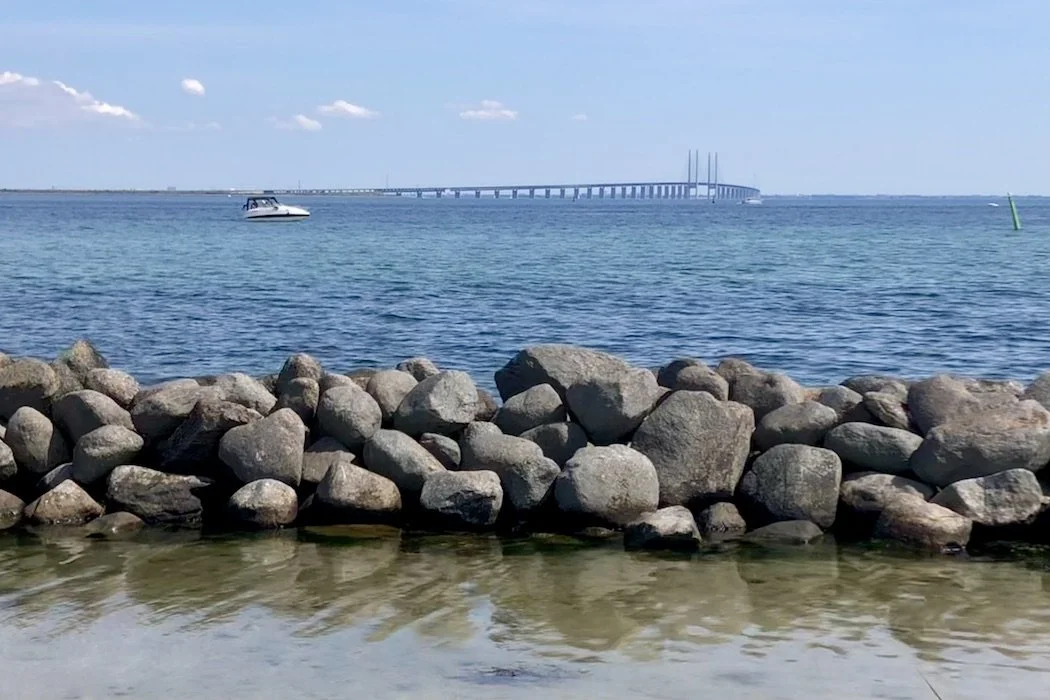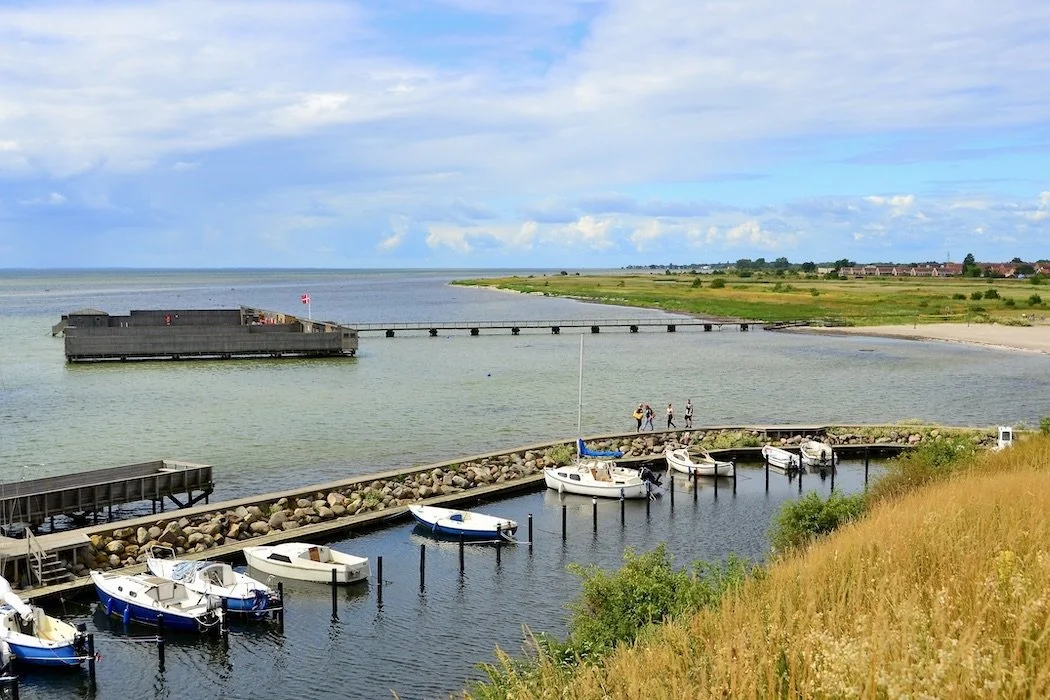Escape the city buzz in Dragør
View of Dragør village from the fort.
“We feel free when we escape…”—Eric Hoffer
The charming coastal town of Dragør lies just 12 km (7 miles) and is a short public bus trip from Copenhagen on the island of Amager, making it a perfect day trip from the capital for a relaxing escape from the buzz of the city. The core old town has one of the largest concentrations of preserved, colorful thatched-roof houses in Denmark, despite two large fires in the 1800s. The traditionally yellow-painted 17th-century homes, practically covered with hollyhocks and roses in summer, line narrow cobblestone lanes connecting small, picturesque squares. It may seem easy to get lost in the maze of look-alike streets, but no matter: all roads eventually lead to the ocean.
Founded in the 1100s as a fishing village, Dragør served as a fishing port throughout the Middle Ages, when herring was the main catch that was sold at a town square appropriately named Herring Square. Of the numerous other activities that made Dragør one of Denmark’s largest maritime towns, the shipping of goods and pilotage were the most important, but ship salvaging and even royally authorized pillaging of hostile ships also played significant roles.
The port remains active today, and the harbor serves as the focal point and gathering place for not only pleasure sailors, but it also provides space for annual festivals like “Herring Day” and “Piloting Day”. Beginning in 1684 by royal decree, piloting played a very important role in the town’s history because of the town’s unique location at the entrance to the busy Øresund, one of the busiest waters in the world. The old Pilot Station now hosts the annual festival and houses the Pilot Museum.
On the invitation of King Christian II in 1516, several dozen farming families from the West Friesland region of the Netherlands arrived on Amager island to work the land he gave them in return for fresh vegetables for his royal court. The Dutch colonists not only taught Danish farmers to work the poor soil, but they also spread their influence, rebuilding a village church near Dragør in the Dutch style, and holding services in Dutch. Their influence remains in a local dialect and in the way some holidays, particularly Shrovetide, are celebrated as their ancestors are still a significant portion of area residents. It wasn’t until several centuries later that Dragør built its own church up the hill from the harbor and old town.
A short walk southward along the waterfront from the port, Dragør Fort sits high up on a small man-made island. This early 20th-century fortification is currently a privately owned event facility and hotel with luxury bunker sleeping facilities, though it is open to the public. Climb to the top of the fort for a view across the meadow to the village or over the ocean. The northeast oceanside view is of the Øresund Bridge and to the southeast lies South Beach (Sydstranden) beyond the large bathing pier. North of the harbor, a dune-side promenade leads along the coast by ocean-front villas as well as another beach and view of the bridge that connects Copenhagen to Malmö, Sweden.
Don’t Miss:
A climb up the steps of Dragør Fort to admire the maritime view.
Lunch Tip:
Dragør Badehotel overlooking the fort for traditional Danish open-faced sandwiches.
Subscribe for inspiration to have my posts drop directly into your inbox. *If you enjoyed what you read, please share this post with like-minded travelers.*
*All photographs are mine, taken with my Nikon D3100 or iPhone 12 Pro.*

